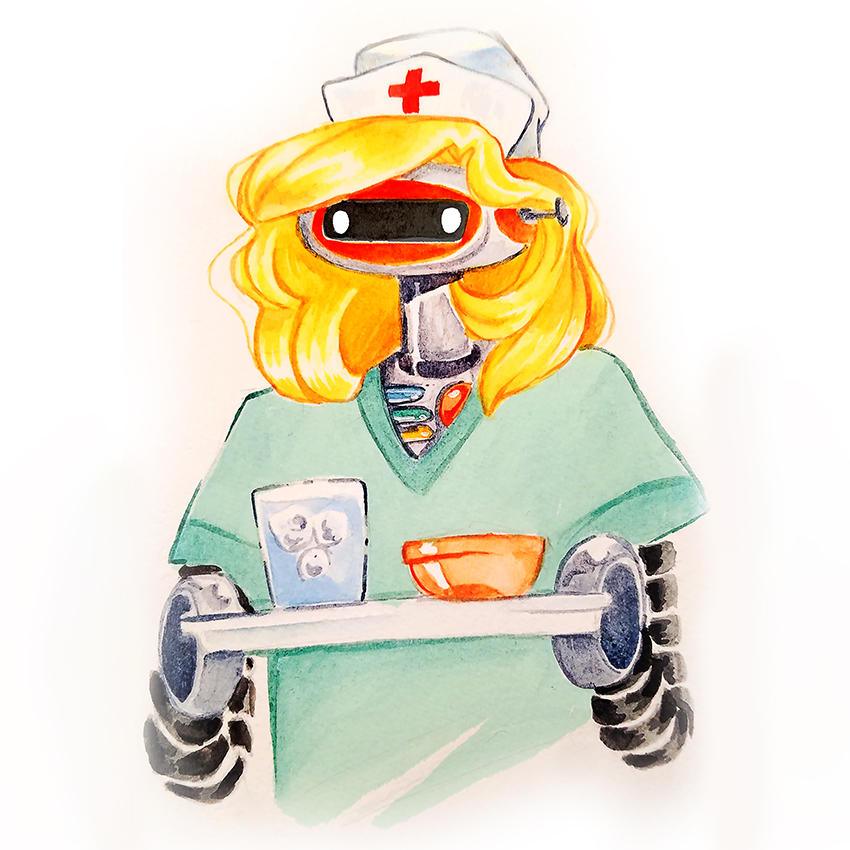There’s a new robot in town. Poli, a robotic hospital assistant tasked to save nurses’ time, is now making the rounds at Austin’s Seton Medical Center.
Poli was developed by Andrea Thomaz, a UT electrical and computer engineering associate professor and CEO of Diligent Droids. She said Poli will mainly provide logistical support for the nursing staff and will not interact with patients.
“Nurses are spending 30 percent of their time just running around doing things that don’t require their license,” Thomaz said.
Thomaz said Poli is designed to do simple non-patient interacting tasks, like gathering supplies, building kits and autonomously navigating the halls of Seton. She added that this will reduce the workload of healthcare staff and allow nurses, doctors and therapists to spend more time working with patients one-on-one.
Kristi Henderson, vice president of Virtual Care and Innovation at the Seton Healthcare Family and the lead clinical researcher at Seton, said Poli’s development has been driven by and for nurses.
“Our whole focus around this is to allow our healthcare team to focus on what’s important to us: the patients,” Henderson said. “The possibilities are endless.”
Henderson said Poli’s primary capability right now is fetching supplies for nurses. She added that Poli receives voice commands and is able to assemble new patient kits using its mechanical arm.
Max Svetlik, recent computer science alumnus, worked with Thomaz to help develop Poli. He said the innovation behind Poli is its machine-learning algorithm, which allows the robot to learn from demonstration and observation, similarly to how humans learn.
“If a human wanted to teach Poli something new, like how to pick up socks for instance, the human would direct Poli over in front of the socks, and move its arm to the socks, tell Poli to close its hand, and move the arm back,” Svetlik said.
He added that Poli is able to replicate this task after just learning it once.
Thomaz said she hopes designing robots in this way will allow robots to easily follow instructions from anyone, not just their programmers.
The inclusion of robots in a hospital setting creates an ethical discussion about who is liable for Poli’s actions, Henderson said. She related this problem to a similar dilemma with self-driving cars: If a car swerves into your lane, and a child runs out into the road, which is the car programed to hit?
“As humans, we can process all of that and make decisions for which is the least impactful,” Henderson said.
Thomaz said Poli solves this ethical dilemma by either only performing human-directed tasks or tasks that function within its “explainable interface.” This “explainable interface,” which Thomaz designed, means Poli is programed to logically explain the reasoning for each of its actions.
Thomaz said the future of artificial intelligence and robots is much simpler than what is portrayed in the media.
“I want robots in society doing more to help people achieve their goals, doing more to empower people, to have the job they really want and to live the life they really want,” Thomaz said.















